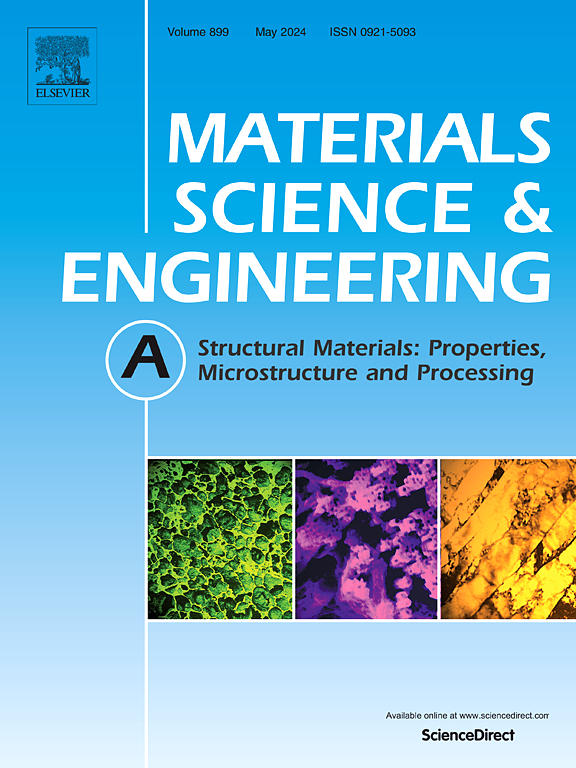一种固溶处理Nimonic 105高温合金的中温脆性
IF 6.1
2区 材料科学
Q1 MATERIALS SCIENCE, MULTIDISCIPLINARY
引用次数: 0
摘要
通过室温~ 900℃的拉伸试验,研究了Nimonic 105合金在1150℃固溶处理后的拉伸性能,并通过扫描电镜(SEM)和透射电镜(TEM)对合金的中温脆脆机理进行了研究。结果表明:合金的极限抗拉强度随温度升高而下降,而屈服强度在800℃以下基本保持不变,超过800℃后急剧下降;伸长率在600℃以上显著下降,在750 ~ 800℃达到最小值后,随着温度的升高逐渐提高。TEM分析表明,在800℃以下,主要的变形机制是位错对对γ′相的剪切作用,而在800℃以上,主要的变形机制转变为Orowan弯曲结合位错的爬升和交叉滑移。合金在750 ~ 800℃时的最小塑性主要是由于晶界处M23C6碳化物的析出和S的晶界偏析造成的。本文章由计算机程序翻译,如有差异,请以英文原文为准。
Intermediate temperature embrittlement of a solution treated Nimonic 105 superalloy
The tensile properties of Nimonic 105 alloy after solution treatment at 1150 °C was studied by tensile tests at temperatures between room temperature and 900 °C, and the intermediate temperature embrittlement mechanism of the alloy was investigated through microstructure observation utilizing scanning electron microscopy (SEM) and transmission electron microscopy (TEM). The results revealed that the ultimate tensile strength of the alloy dropped with increasing temperature, while the yield strength remained basically unchanged below 800 °C, above which it reduced sharply. The elongation decreased markedly above 600 °C, and then enhanced gradually with further increasing temperature after reaching a minimum at temperatures of 750–800 °C. TEM examination showed that the primary deformation mechanism was shearing of γ′ precipitates by coupled dislocation pairs below 800 °C, and it changed to Orowan bowing combined with climb and cross-slip of dislocations above this temperature. The ductility minimum of the alloy at 750–800 °C resulted mainly from the precipitation of M23C6 carbides at the grain boundaries and grain boundary segregation of S.
求助全文
通过发布文献求助,成功后即可免费获取论文全文。
去求助
来源期刊

Materials Science and Engineering: A
工程技术-材料科学:综合
CiteScore
11.50
自引率
15.60%
发文量
1811
审稿时长
31 days
期刊介绍:
Materials Science and Engineering A provides an international medium for the publication of theoretical and experimental studies related to the load-bearing capacity of materials as influenced by their basic properties, processing history, microstructure and operating environment. Appropriate submissions to Materials Science and Engineering A should include scientific and/or engineering factors which affect the microstructure - strength relationships of materials and report the changes to mechanical behavior.
 求助内容:
求助内容: 应助结果提醒方式:
应助结果提醒方式:


